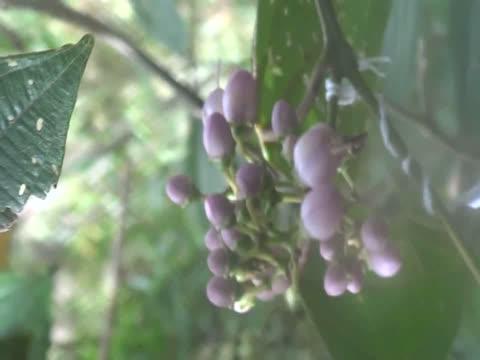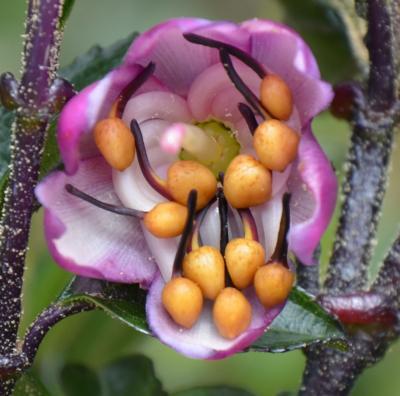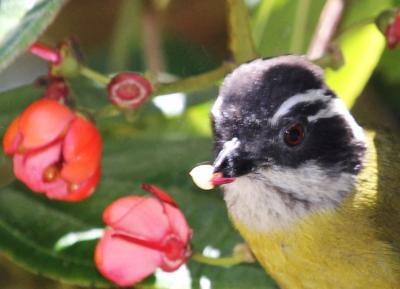Axinaea flowers appear in clusters of a few to more than 20 flowers, with pink, red, yellow, or orange petals that usually don't open completely. The stamens of those flowers stand out based on their contrasting colors and conspicuous, bulbous appendages. Something else about the stamens also piqued the researchers' curiosity: one or more of these stamens was almost always found missing in the flowers the researchers observed in the field or on herbarium specimens.
The researchers learned what had happened to those stamens—and just how remarkably unusual Axinaea flowers actually are—through a combination of pollination experiments, video monitoring, and detailed analyses of stamen structure and composition. They have observed multiple bird species, mostly tanagers, enjoying Axinaea food bodies and acting as pollinators in the process.
The findings may hold general lessons about the evolution of plants and their pollinators, the researchers say, noting that the vast majority of Axinaea's close relatives depend on bees for pollination.
"Only about 100 of the 5,000 or so species in the family Melastomataceae are known to produce nectar and to be pollinated by other insects or vertebrates," says Jürg Schönenberger, senior author of the study, also at the University of Vienna. "In the evolution of these species, including Axinaea, pollinator shifts in combination with changes in the floral morphology must have occurred."

A Yellow-throated Tanager (Iridosornis analis) removing stamens from Axinaea confusa; note how the bird contacts the stigma (receptive female organ) when it sticks its head back into the flower in order to remove another stamen.
(Photo Credit: Current Biology, Dellinger et al.)
Those evolutionary shifts may be related in part to growth at higher elevations, a pattern that would seem to support an earlier idea that birds may be more-efficient pollinators than bees at higher altitudes. The researchers say they now plan to study such pollinator shifts and their connection to ecogeographical changes, such as the uplift of the Andes Mountains, in greater detail.

A flower of Axinaea affinis. The strong visual colour contrast between the yellow, bulbous stamen appendages (bellows organs) and the pink petals becomes clear. The pollen is contained in the anthers, the blackish, elongated structures connected to the bulbous appendages.
(Photo Credit: Current Biology, Dellinger et al.)

A Sooty-capped bush tanager (Chlorospingus pileatus) holding a freshly removed stamen from Axinaea costaricensis in its beak. Flowers of A. costaricensis where stamens have been removed are visible in the background
(Photo Credit: Current Biology, Dellinger et al.)
Source: Cell Press